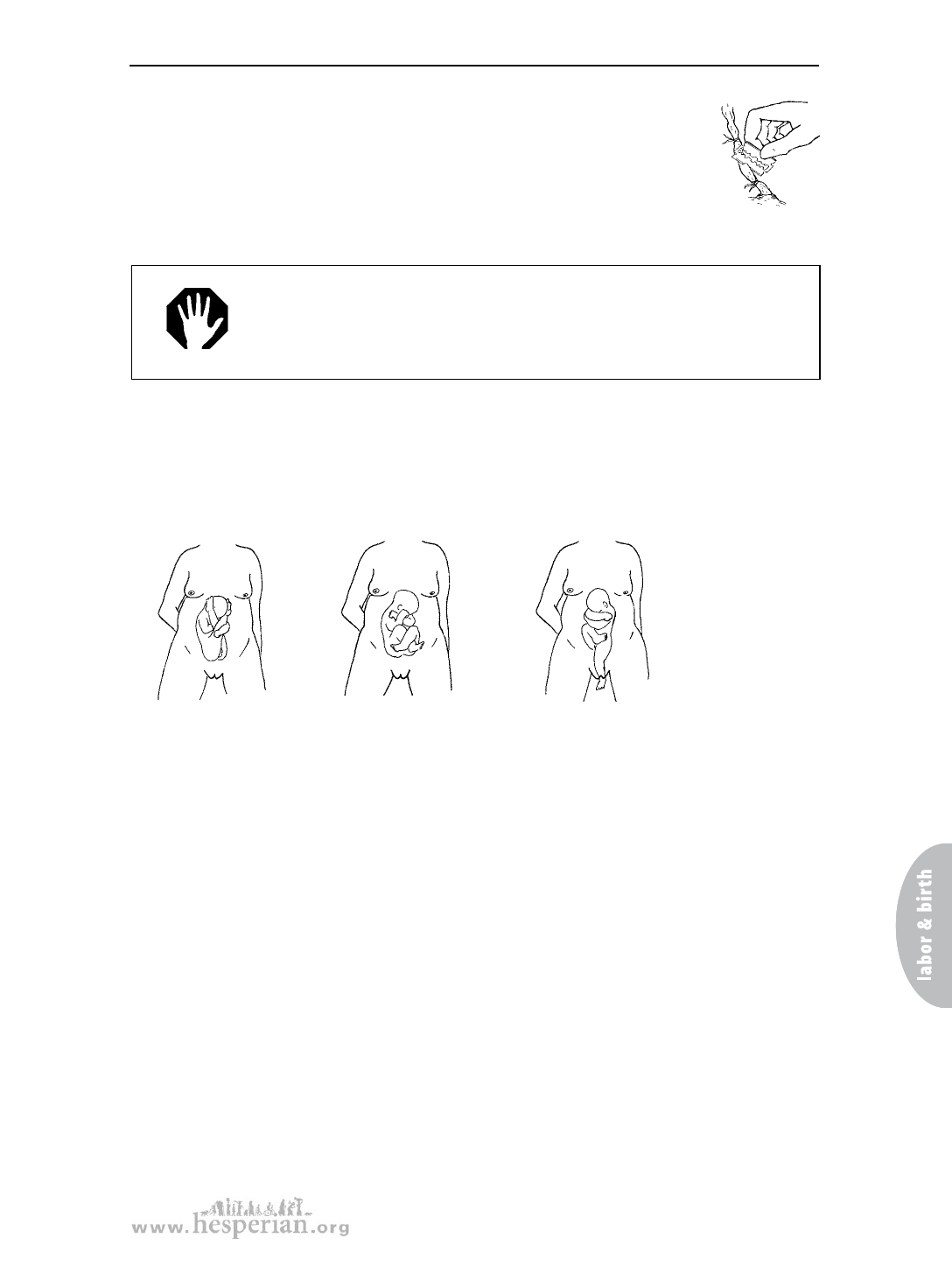
Baby is breech
Cut the cord between the strings or clamps with a sterile knife,
razor blade, or scissors. (Anything that is sharp enough to cut the cord
will work, as long as it has been sterilized using one of the methods
on pages 59 to 67.)
Leave the string or clamp on until the cord stump falls off —
usually within the first week.
WARNING! Do not put dirt or dung on the cord stump!
Dirt and dung do not protect the stump — they cause serious
infections. Protect the stump by keeping it clean and dry.
Baby is breech
There are 3 breech (bottom down) positions:
frank breech
(straight legs)
complete breech
(folded legs)
footling breech
(feet first)
A frank breech is the easiest and safest kind of breech to deliver.
Dangers of breech births
Breech births can go well, but they are often dangerous for the baby. They are
especially dangerous for a first baby, because no one knows if the mother’s pelvis
is big enough for birth.
There are serious dangers of breech birth:
• The cord can more easily prolapse when the waters break (see page 176).
• The baby’s head can get stuck at the cervix. This can happen if the baby’s
body, which is usually smaller than the head, comes through the cervix
before the cervix is fully open.
• The baby’s head can get stuck at the mother’s pelvis after his body has slipped
through. If the cord gets pinched between the baby’s head and the mother’s
pelvis, the baby can die or be brain damaged from lack of air.
If possible, breech babies should be born in a medical center, especially footling
breech. If medical help is too far, or if a birth in a medical center is not possible,
make sure a midwife who is experienced with breech is there to help at the birth.
215
A Book for Midwives (2010)